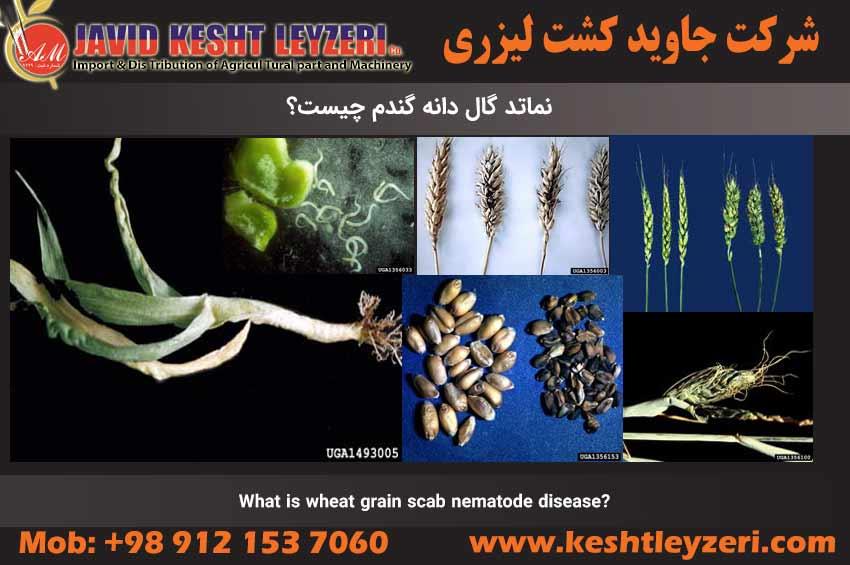
What is wheat grain scab nematode disease?
javid keshtleyzeri Co.ltd
Contents list:
What are the symptoms of nematode disease of wheat grain?
Which plants are the hosts of seed gall nematode disease?
How to control and prevent nematode nematode disease of wheat grain?
In the following, the above contents will be reviewed.
What are the symptoms of nematode disease of wheat grain?
The symptoms of this disease appear in the stemming stage and after that. The result of this disease is the shortening of the distance between the wheat stem nodes, which makes the infected stems shorter than the healthy stems and creates complexity in the length of the stem and leaves.
Diseased spikes are slightly wider and glumes have the shortest spike length. Diseased spike kernels are often brown or black in color and are actually calluses that are smaller in size than healthy wheat kernels. These galls, mixed with healthy seeds, lead to nematode transmission.
If these galls are drowned and crushed in water, the mobile nematode larvae will come out in large quantities.
Which plants are the hosts of seed gall nematode disease?
This nematode, in addition to wheat, may also attack rye, triticale, barley, and oats, and the most disease damage is reported from wheat fields.
How to control and prevent nematode nematode disease of wheat grain?
If the farmers come across dwarf plants, pale and with many twists in the leaves while visiting the wheat fields, they are obliged to inform the experts of Jihad Agricultural Service Centers along with the samples so that they can visit the field and diagnose the disease.
Harvesting earlier than the usual time is necessary to prevent nematode scab in the fields.
Measures should be taken to first harvest the parts of wheat fields infected with nematodes, and then clean the combines and then continue harvesting in other fields. Also, the officers of the service centers should also fully supervise the harvesting of wheat infected with nematodes. Wheat infected with nematodes should also be delivered to special shopping centers for infected wheat.
After harvesting, with the necessary care, the remaining contaminated field wheat should be burned.
The correct and principled spraying of wheat seeds before planting or the use of disinfected spraying seeds is the most practical method of preventing and fighting nematodes.
Buying and selling seeds infected with nematodes is effective in spreading the disease. Farmers are advised to refrain from buying seeds infected with nematodes and consult with service centers in this case, and wheat seed sellers should refer to the agricultural administration of the relevant city and village service centers to inspect the seed shipment and confirm for supply to farmers.
Removal of host weeds, including rye and oats, which can contribute to the transmission of the nematode from year to year, is of great importance.
Implementation of crop rotation with non-host plants for at least 2 years, which is recommended to avoid wheat cultivation in contaminated fields and instead of wheat, crops such as cotton, canola, soybean, chickpea, sunflower, potato, mung bean and summer crops should be cultivated.
It is recommended and emphasized to the farmers who intend to rent land for wheat cultivation next year, to consult and inform the relevant agricultural Jihad service centers of the respective village to identify the land in terms of nematode contamination before signing the contract.
According to Article 9 of the Plant Protection Law, in case wheat fields infected with nematodes are identified and without observing rotation, they should be cultivated again in the next crop year. He will be the owner of the farm.






